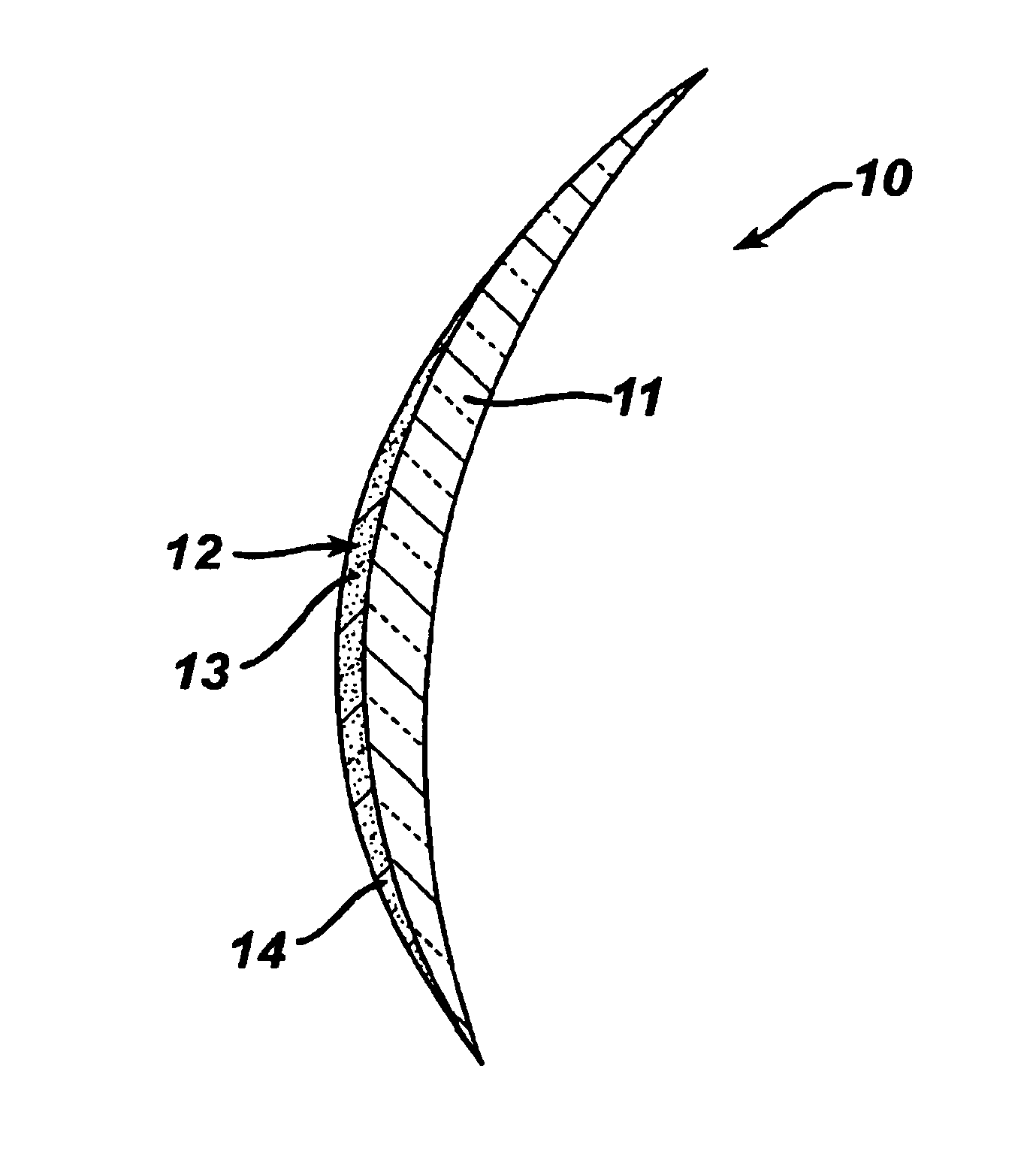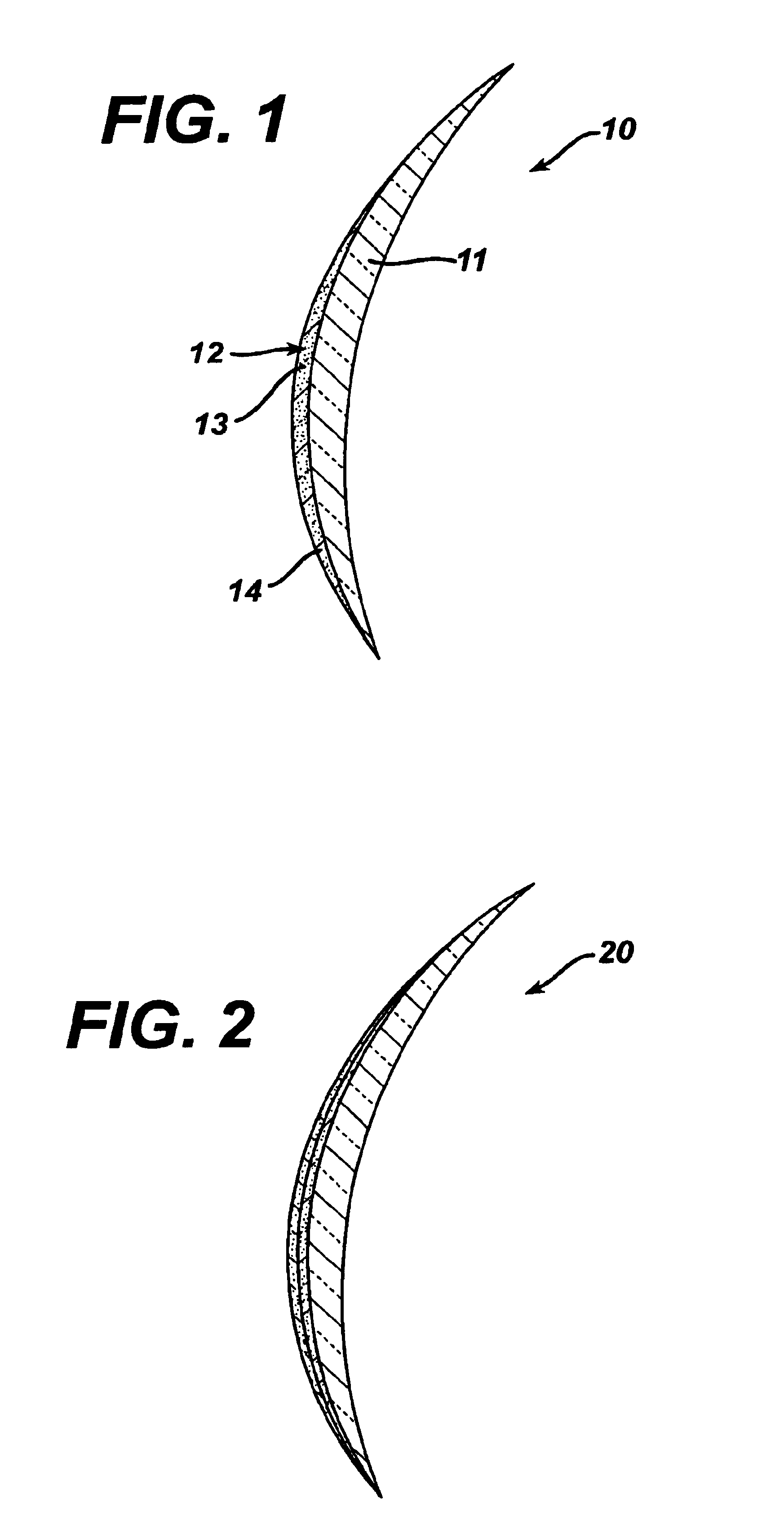Method for manufacturing multifocal lenses
- Summary
- Abstract
- Description
- Claims
- Application Information
AI Technical Summary
Benefits of technology
Problems solved by technology
Method used
Image
Examples
Embodiment Construction
[0008]In the present invention, a method and lenses produced by the method are provided in which the center thickness is reduced compared to conventional multifocal lenses. In addition to a thinner lens, the method of the invention provides lenses having good impact resistance.
[0009]In one embodiment, the invention provides a method for manufacturing a multifocal lens comprising, consisting of, and consisting essentially of depositing on at least a portion of a surface of a lens substrate at least one layer of a surface forming amount of a high refractive index material, wherein the material is deposited under conditions suitable to form on the lens substrate surface a near vision zone, an intermediate vision zone, or a combination thereof. In another embodiment, the invention provides a multifocal lens produced by this method. For purposes of the invention a “high refractive index material” is a material having a refractive index of about 1.7 or greater.
[0010]The method of the inve...
PUM
 Login to View More
Login to View More Abstract
Description
Claims
Application Information
 Login to View More
Login to View More - R&D
- Intellectual Property
- Life Sciences
- Materials
- Tech Scout
- Unparalleled Data Quality
- Higher Quality Content
- 60% Fewer Hallucinations
Browse by: Latest US Patents, China's latest patents, Technical Efficacy Thesaurus, Application Domain, Technology Topic, Popular Technical Reports.
© 2025 PatSnap. All rights reserved.Legal|Privacy policy|Modern Slavery Act Transparency Statement|Sitemap|About US| Contact US: help@patsnap.com


